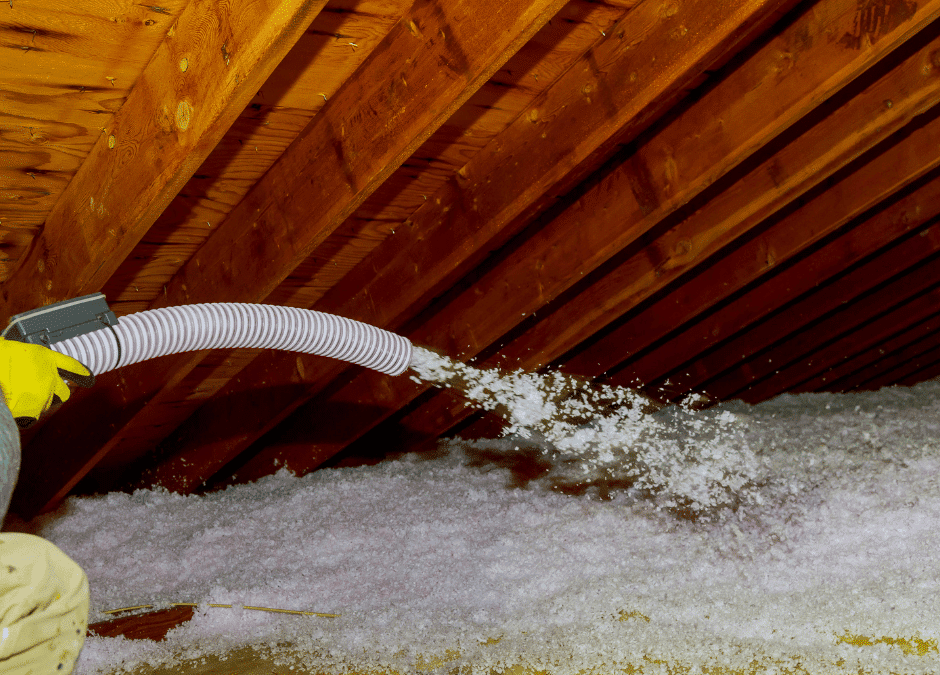Deciding on the right insulation is a pivotal step toward achieving an energy-efficient, comfortable home. The choice between spray foam and blown-in insulation often leaves homeowners pondering which path leads to optimal home comfort and energy savings. South Atlanta Insulation Experts are on hand to illuminate the features and benefits of each, aiding in your decision for a perfectly insulated home.
Understanding Insulation and Its Importance
Insulation is your home’s silent guardian, working tirelessly to maintain ideal temperatures regardless of the season. It’s crucial for reducing energy consumption, cutting costs, and creating a serene, comfortable living space. However, the effectiveness of your insulation significantly depends on choosing the right type for your home’s specific needs. This guide dives into the details of spray foam and blown-in insulation, aiming to clarify which option might be the best fit for your residence.
What is Spray Foam Insulation?
Spray foam insulation is akin to giving your home an impenetrable coat of armor against air and moisture intrusion. Expanding to fill cracks and voids provides an excellent barrier against the elements. This versatility makes spray foam an exceptional choice for those looking to enhance their home’s energy efficiency and seal it from air and moisture ingress comprehensively.
Advantages of Spray Foam Insulation
The stellar air sealing capabilities of spray foam insulation set it apart, offering significant reductions in energy bills. Its resilience means it maintains its form and efficiency over time, negating the need for adjustments or replacements. This long-term reliability and performance make spray foam a preferred choice for homeowners focused on sustainability and energy savings.
Potential Drawbacks of Spray Foam Insulation
However, excellence comes at a price. The initial investment for spray foam insulation is considerably higher than other types. Additionally, the necessity for professional installation can add to the upfront cost. For those with tight budgets or in search of a temporary fix, spray foam might not align with their immediate goals.
What is Blown-In Insulation?
Blown-in insulation offers a quick, effective method to increase your home’s thermal efficiency. Using materials like fiberglass or cellulose, it’s ideal for filling in nooks and crannies, particularly in attics and wall cavities. This method’s adaptability makes it an attractive option for improving energy efficiency with minimal intrusion.
Advantages of Blown-In Insulation
One of the key benefits of blown-in insulation is its cost-effectiveness and ease of installation, making it an appealing choice for those looking to enhance their home’s energy efficiency on a budget. It can be quickly deployed in hard-to-reach areas, providing a straightforward solution for boosting insulation without extensive renovation work.
Potential Drawbacks of Blown-In Insulation
However, it’s important to note that blown-in insulation may compress or settle over time, potentially diminishing its insulative properties. Periodic inspections and possible top-ups may be necessary to ensure it continues to perform effectively, adding to the long-term maintenance requirements.
Comparing Cost and ROI
Making an informed choice between spray foam and blown-in insulation means considering both the upfront cost and the long-term return on investment. Here’s a breakdown to help guide your decision.
- Initial Investment: Spray foam insulation typically requires a higher upfront investment than blown-in. This is due to the materials used and the complexity of the installation process.
- Long-Term Savings: Despite its higher initial cost, spray foam can lead to more significant savings on energy bills over time due to its superior air sealing and insulating properties.
- Installation Costs: Professional installation is a must for spray foam, adding to its initial cost, whereas blown-in insulation can sometimes be a DIY project, saving on labor costs.
- Maintenance Needs: Blown-in insulation may require top-ups over time to maintain its effectiveness, potentially adding to its long-term cost.
- Energy Efficiency: Spray foam’s exceptional energy efficiency can provide a higher return on investment through reduced heating and cooling costs.
- Home Value Increase: Both insulation types can increase your home’s value, but the enhanced efficiency and durability of spray foam often offer a greater boost.
Weighing the costs against the potential returns is crucial in choosing the insulation that best fits your budget and energy efficiency goals.
Which Insulation is Best for Your Home?
The decision between spray foam and blown-in insulation hinges on several factors, including your budget, home design, and specific energy efficiency goals. Considering your local climate and the specific areas of your home needing insulation will also guide your choice, ensuring you opt for the insulation that best meets your needs.
Contact Us for Your Insulation Needs
Choosing the right insulation is an investment in your home’s comfort, efficiency, and value. South Atlanta Insulation Experts can help you make an informed decision, offering expert guidance and professional installation services. Whether you lean towards the immediate savings of blown-in insulation or the long-term efficiency of spray foam, we’re here to ensure your home is cozy, energy-efficient, and beautifully insulated.

Recent Comments